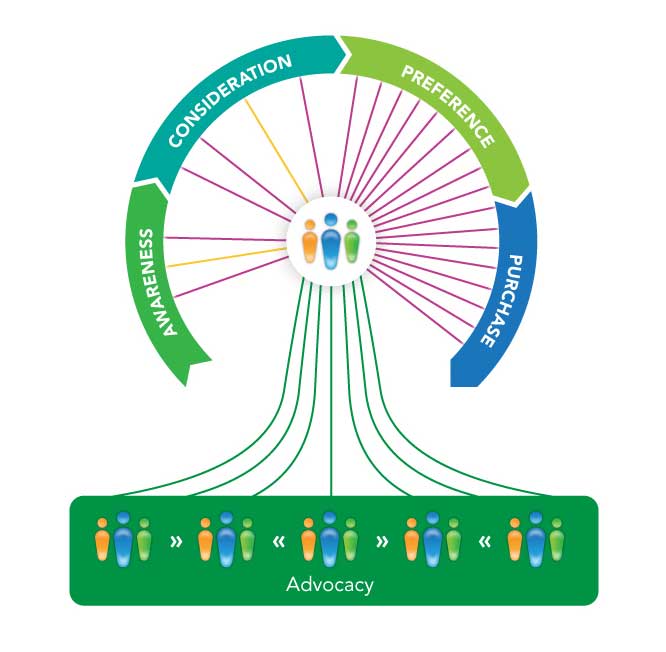President Obama was elected in 2008 because he knew how to create and mobilize advocates. Via authentic community engagement, he was also able to raise half a billion dollars online during his 21-month campaign for the presidency, dramatically ushering in a new digital era in presidential fundraising and advocacy.
In 2008, The Washington Post provided insight into Obama's online operation based on the numbers: Three million supporters made a total of 6.5 million donations online, adding up to more than $500 million. Of those 6.5 million donations, six million were $100 or less. The average online donation was $80, and the average Obama supporter gave more than once.
More than 13 million people provided their email addresses to the "Obama for America" campaign site and opted in to receive email messages about campaign news and events. Supporters also created more than two million user profiles, wrote more than 400,000 blog posts, hosted more than 200,000 events, and established more than 45,000 volunteer groups throughout the United States. And just before Election Day, Obama supporters made more than three million phone calls to citizens to advocate his election.
The number of Facebook fans or Twitter followers Obama has is irrelevant in this example. It wasn't the quantity or size of Obama's online community that helped him get elected. One of the primary reasons Obama was elected was his ability to inspire action. His supporters believed in his vision. They trusted in his "Change we can believe in" positioning statement.
His supporters rallied behind him and told their friends, followers, co-workers, family members, and neighbors, and they even called strangers every day for months to share his vision for the country. The volume of online conversations on Facebook, Twitter, and the entire social Web sparked a groundswell of supporters for his vision.
That level of advocacy resulted in Obama's election on November 4, 2008.
A Valuable Lesson for Business
Many companies, products, and brands have advocates. An advocate is a person who loves or believes in something so much that he or she tells anyone and everyone about it. Advocates are influential and passionate, and they talk about the brands they care about even if the brand isn't listening.
The term influencer is often used synonymously with advocate, but there is a difference between the two. Advocates provoke action because of the level of trust they have with their circles of influence. They are trusted because they are authentic, and people trust their friends when seeking product advice. Advocates also play a significant role in consumers' purchasing behavior and are willing to go the extra mile to answer questions about the brand or product.
Companies need to think long term about creating programs designed specifically for their advocates.
An important distinction needs to be made here. The mere action of becoming a "friend" or "fan" and then following or "liking" a brand inspires action. Imagine for a minute how a brand could put a little effort in harnessing those potential relationships and invest in time, resources, energy, and creativity to build a program focusing on those relationships.
Advocates are everywhere; they're dormant and just waiting to be activated. And, they are also changing the purchase funnel.

The Funnel as Cycle
Marketers and brand managers spend a lot of time, energy, resources, and budget trying to understand what messaging via traditional media will resonate with their target audiences (which calls to action will spark the most clicks, conversations, etc.).
Millions of dollars are spent on media that aim to create marketing messages in each of the phases—awareness, consideration, preference, purchase, and loyalty. And smart marketers also create metrics models for each phase of the purchase funnel to measure the effectiveness of those messages.
However, the purchase funnel is no longer a funnel. Customer advocacy is at the center of the model. It's meant to illustrate the power of social and how advocates are aiding and influencing their micro communities down the purchase funnel via authentic messages (or everyday conversation).
The model is now circular: As a brand invests and drives formal customer advocacy programs, they will in turn influence others at various phases of the purchase funnel—creating a cycle of influence and advocacy that the brand is facilitating.




